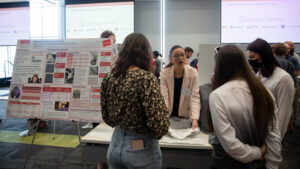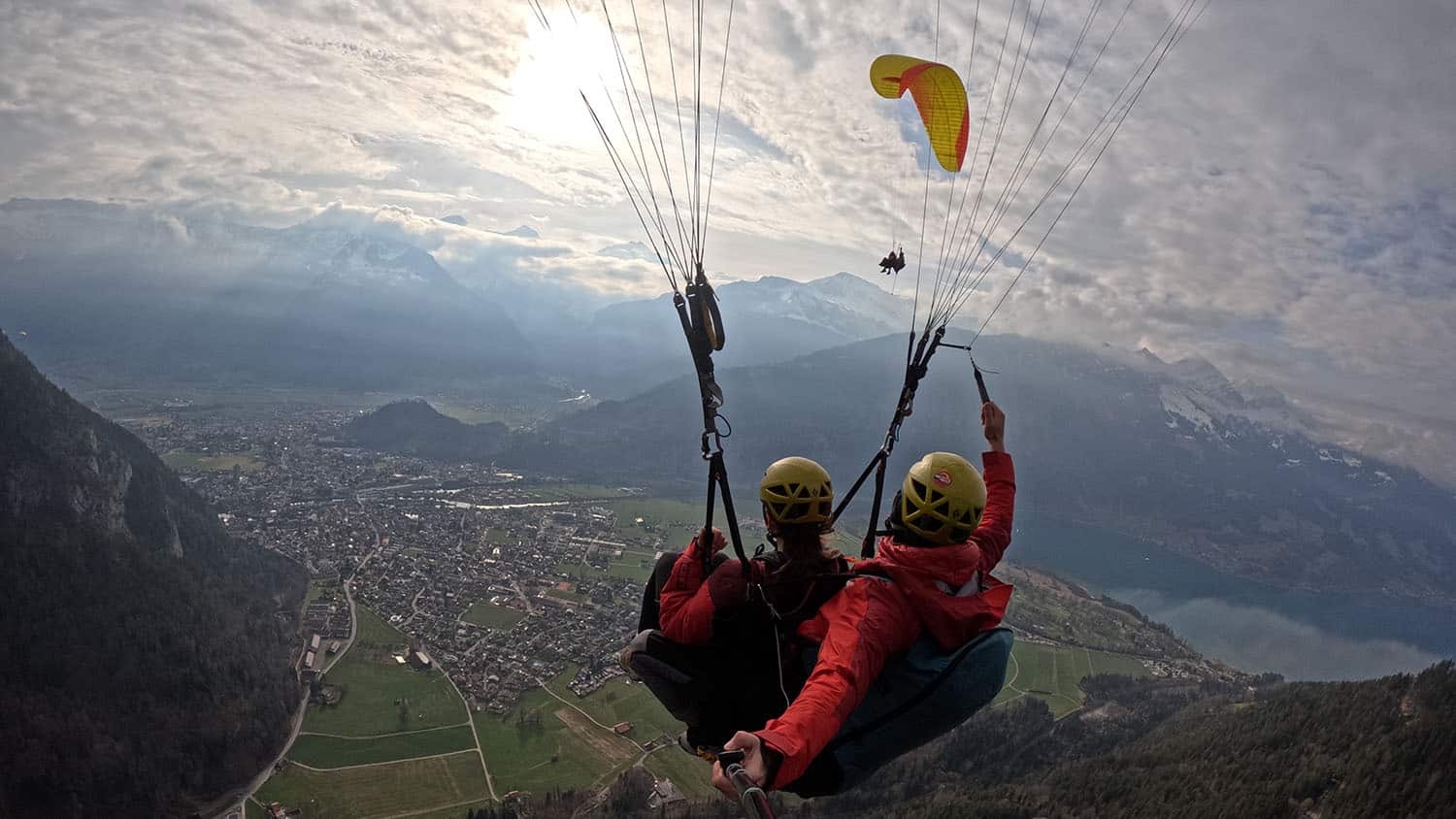Students Develop Industry-Caliber Products, Processes for Senior Design

By Sarah Stone
From activewear to healthcare supplies, car interiors, and military uniforms, students developed products or processes for nearly all applications of textiles during this year’s Senior Design program at the Wilson College of Textiles.
The capstone course groups seniors in textile engineering (TE) and textile technology (TT) into teams and pairs them with an industry sponsor on a year-long project. Assignments run the gamut from testing methods to applications of new technologies to product development. This year’s sponsors included household names like The North Face and Under Armour as well as industry-leading corporations like Lear and PVH.
2021-2022 Senior Design Sponsors

At the end of the year, teams present the processes or products they have developed to judges from both academia and industry. At least four judges score each team on their presentations, process, testing and what they have ultimately accomplished.
2021-2022 Senior Design Winners
1st Place: Sustainable Aramids for Motorsports | Sponsor: Teijin Aramids

Sean Fijen (TE),
Emily Petersen (TE)
2nd Place: Thermotherapy Activewear | Sponsor: ATHify

Jessica Schwendeman (TE),
Kayla Watt (TE)
3rd Place: Wellness Garment | Sponsor: HanesBrands

Emma Glover (TT),
Tiffany Jones (TT),
Delaney Joyce (TE)
Most Innovative: Alternative Ripstop Designs | Sponsor: The North Face
This awarded is given by alumnus John Calvert (B.S. TT, ’71) to one Senior Design team each year.

Brandon Postema-Drolet (TT),
Chris Watts (TE)
Before that scoring comes months of ideation, testing and development. Throughout that time, sponsors play a much larger role than just assigning a project. Students check in with their sponsors twice a month for both support and critiques. They must learn to be flexible and willing to translate feedback into progress in order to meet their sponsors’ needs and expectations.
“That was one of our biggest challenges, was developing something that could be implemented in one to two years. That was a big priority for our sponsor,” TE student Claire Henson says. Her team partnered with PVH Corporation to develop processes that could sustainably break down post-consumer underwear, as well as new products utilizing the material. “For example, we created a whole new yarn that we thought could be really cool, but our sponsor told us it wouldn’t work within their time frame. So that’s been helpful in the sense of narrowing down ideas.”
Immersing students in a “real-world” industry environment is a key goal of the capstone.
“Senior Design really is using problem-solving to solve real-life problems,” circularity specialist and PVH industry sponsor Megan Simmons says. “And I see what these students developed being used in the future.”
The large scale and high standards of these industry sponsored assignments also require a more professional level of project management from the seniors. That means time management and problem solving to ensure that goals are met despite any challenges that might arise.
“COVID and supply chain issues have had a heavy effect on us. We had to change what textile mill we were using,” TT student Jacqueline Ashford-Lavy says. Her team developed an alternate ripstop fabric for The North Face. “Our deadlines got pushed back because of that. Materials kept changing, our sourcing and suppliers kept changing. And all of that resulted from how long it takes to get things to ship and the capabilities of other people that we rely on.”

Nearly every project requires students to delve deep into a specific topic of materials science or production. Because of the diverse nature of study at the Wilson College, students don’t have to look far to find an expert willing to help.
Gunnika Ahuja, Owen Lindey and Maddie Wilson developed a new chemical protective and flame resistant garment for the U.S. Army’s Pine Bluff Arsenal. The sponsor wanted a coverall that could be washed and reused in order to improve sustainability without sacrificing the protection provided by the existing models. They worked closely with Assistant Professor Bryan Ormond, who specializes in personal protective equipment for the college’s Textile Protection and Comfort Center, to make this happen.
“Dr. Ormond explained to us that if air is getting through these garments, then the particle size that we’re working with is also getting through, so we decided to test particle filtration by doing a pore luminary test of air permeability,” Maddie Wilson says.
Program co-directors Russell Gorga and Amanda Mills also provide support and resources over the course of the year, from meeting with students to holding workshops about elevator pitches, technical justifications and benchmarking.
This unique combination of instruction and independent, industry-standard project work transforms seniors from students to valuable members of the workforce. Many alumni say they still rely on lessons they learned in Senior Design.

“It kind of funneled into what I do now at The North Face,” alumnus Sam Covington (B.S. TT ‘19) says. The trims developer also served as an industry sponsor for Senior Design this year. “A lot of the same issues come up with lead time development issues and other challenges that my team deals with on a daily basis.”
Dig Deeper Into Senior Design
Learn more about the each team’s project and final product in their own words by expanding the booklet below.
- Categories:


